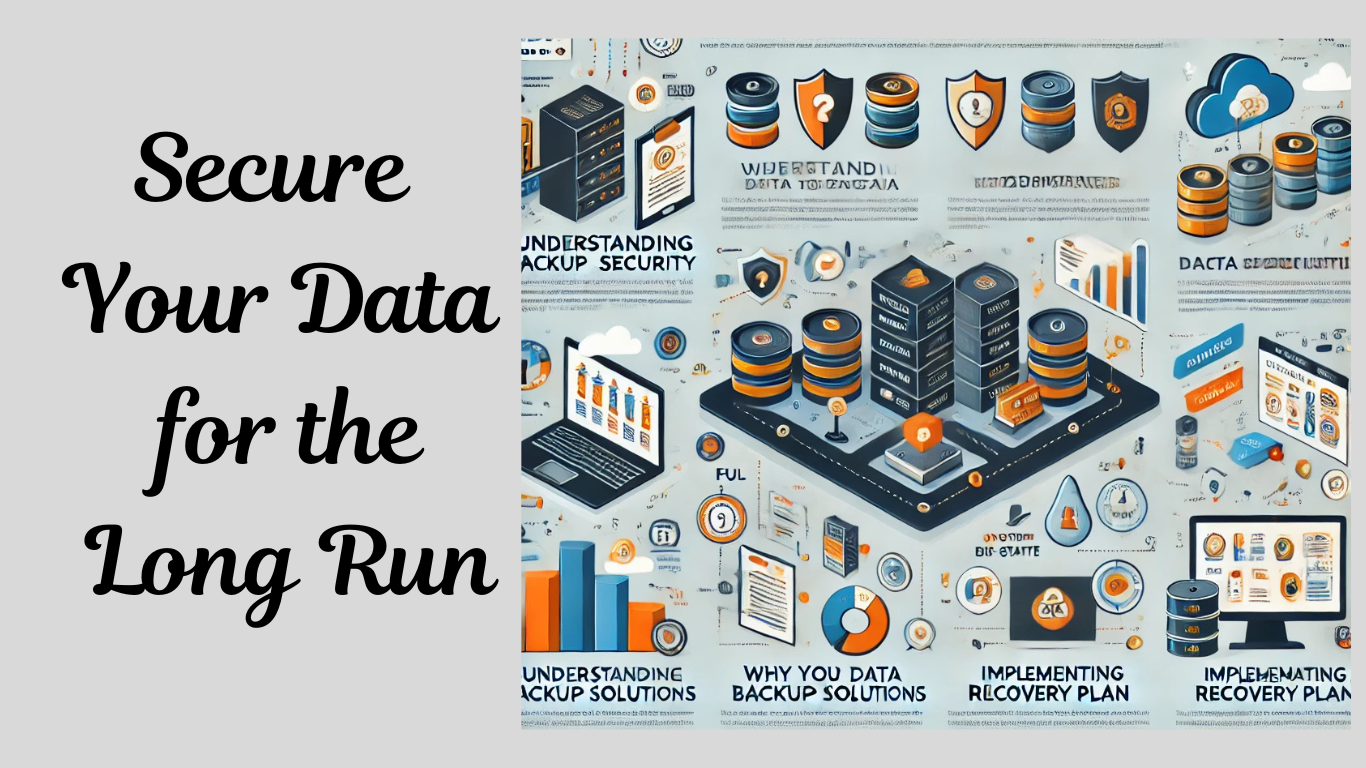
In today’s digital landscape, where data breaches and losses are becoming increasingly common, the question Is your data backup strategy strong enough? is more important than ever. Securing your data through comprehensive backup and recovery strategies not only protects your precious information but also ensures business durability in the face of unanticipated disasters. In this blog, we’ll explore effective methods for long-term data protection and highlight the significance of backup and recovery in securing your valuable assets.
Understanding Backup and Recovery
What’s Backup and Recovery?
Backup and recovery refer to the processes involved in creating copies of data and restoring it when necessary. A backup is a duplicate of your data stored in a separate location, while recovery is the process of reacquiring that data in the event of loss, corruption, or breach. Together, these strategies are essential for maintaining data security and ensuring that you can quickly recover from any data loss incident.
Why Is Data Security Important?
Data security is a critical concern for businesses of all sizes. Data breaches can lead to significant financial losses, damage to reputation, and legal repercussions. By enforcing robust backup and recovery solutions, organizations can:
- Minimize Data Loss: Regular backups ensure that your most important data is not lost forever.
- Reduce Downtime: Quick recovery processes can restore operations swiftly, minimizing disruptions.
- Enhance Compliance: Many industries have regulations requiring data protection, and a solid backup strategy can help meet these standards.
Comprehensive Backup Solutions
Identify Your Data
The first step in creating a comprehensive backup strategy is to identify the data that needs protection. Prioritize critical files, databases, and applications that are essential to your business operations. Consider categorizing your data based on its importance and sensitivity.
Choose the Right Backup Method
There are several backup methods available, including:
- Full Backup: A complete duplicate of all selected data, providing the most comprehensive protection but requiring more storage space and time.
- Incremental Backup: Only backs up data that has changed since the last backup, saving time and storage but requiring more effort for recovery.
- Differential Backup: Backs up all changes made since the last full backup, providing a balance between full and incremental backups.
Select Storage Solutions
Selecting the right storage solution is critical for effective backup and recovery. Options include:
- On-Site Storage: Local storage solutions such as external hard drives or network-attached storage (NAS) provide quick access but may be vulnerable to physical threats.
- Off-Site Storage: Storing backups in a different geographical location protects against natural disasters and theft.
- Cloud Backup: Cloud-based solutions offer scalability and accessibility, enabling businesses to access their data from anywhere while reducing reliance on physical infrastructure.
Implementing a Recovery Plan
Develop a Recovery Strategy
Creating a well-defined recovery plan is essential for quick data restoration. Outline the steps needed to recover data, including:
- Roles and Responsibilities: Assign team members specific roles to ensure an organized response.
- Recovery Time Objectives (RTO): Determine how quickly you need to restore operations after a data loss incident.
- Recovery Point Objectives (RPO): Establish the maximum acceptable amount of data loss in terms of time.
Regularly Test Your Backup and Recovery Procedures
Testing your backup and recovery processes regularly is vital to ensure their effectiveness. Conduct drills to verify that data can be restored quickly and accurately. Identify any weaknesses in your plan and make adjustments as necessary.
Long-Term Data Protection Strategies
Automate Backups
Automating your backup processes can significantly reduce the risk of human error and ensure that backups are performed consistently. Set up automatic schedules for regular backups, and monitor the processes to confirm successful completion.
Stay Updated on Technology
Technology is constantly evolving, and staying informed about the latest advancements in backup and recovery solutions is crucial. Regularly evaluate your current systems and consider upgrading to improve your data security measures.
Educate Your Team
Investing in training and awareness programs for your employees can enhance data security. Educate them about the importance of backups, common security threats, and best practices for data handling.
Conclusion
In a world where data is one of your most valuable assets, securing it for the long run is non-negotiable. Implementing comprehensive backup and recovery strategies will not only protect your data but also ensure your business remains resilient in the face of challenges. By understanding the importance of backup solutions and following the steps outlined in this guide, you can effectively safeguard your information and maintain long-term data protection.
Remember, the best time to prepare for a data loss incident is before it happens. Start securing your data today with SYNCX.

